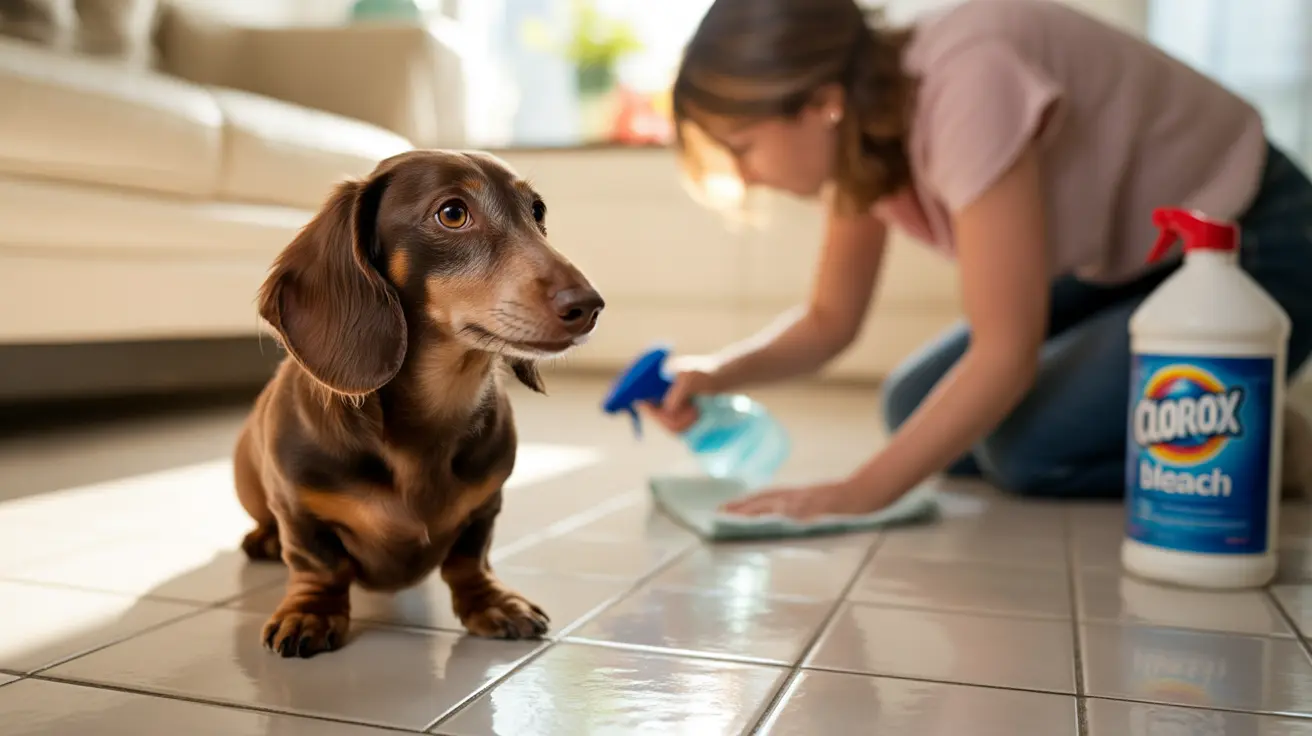When dealing with a flea infestation, many homeowners wonder about using household cleaners like bleach as a solution. While bleach can indeed kill fleas on hard surfaces, it's crucial to understand both its effectiveness and limitations - as well as the serious risks involved, especially for pet owners.
In this comprehensive guide, we'll explore how bleach affects fleas, discuss safe usage methods, and most importantly, outline more effective alternatives for protecting your home and pets from these persistent parasites.
How Bleach Affects Fleas
Bleach (sodium hypochlorite) can effectively kill adult fleas, eggs, and larvae when applied to hard, non-porous surfaces. The chemical works by breaking down organic matter, essentially destroying the flea's body on contact. However, this effectiveness comes with significant limitations:
- Only works on hard surfaces like tile, concrete, or sealed wood
- Must remain in contact for at least 10 minutes
- Requires proper dilution to be effective without causing damage
- Cannot penetrate soft materials where fleas typically hide
Important Safety Warnings
Before considering bleach for flea control, understand these critical safety concerns:
- Never apply bleach directly to pets - it's extremely toxic and can be fatal
- Avoid using bleach on carpets, furniture, or fabrics
- Always ensure proper ventilation when using bleach
- Keep pets away from treated areas until completely dry
- Don't mix bleach with other cleaning products
More Effective Flea Control Methods
Veterinary-Approved Treatments
Instead of relying on bleach, consider these proven flea control methods:
- Topical flea treatments prescribed by your veterinarian
- Oral flea medications that work systemically
- Flea collars designed specifically for cats or dogs
- Regular grooming with flea combs
- Professional pest control services for severe infestations
Environmental Control
Combine these strategies for comprehensive flea management:
- Vacuum thoroughly and frequently, especially in pet areas
- Wash pet bedding in hot water (140°F/60°C) weekly
- Treat outdoor areas where pets spend time
- Use pet-safe environmental sprays as directed
- Maintain regular cleaning routines to prevent reinfestation
Frequently Asked Questions
Does bleach kill fleas on carpets and upholstery?
No, bleach should not be used on carpets or upholstery as it can damage these materials and won't effectively reach fleas deep within the fibers. Instead, use specific carpet treatments and thorough vacuuming.
Can I use bleach to kill fleas on my pet's fur?
Absolutely not. Never apply bleach to any animal's fur or skin. It's extremely toxic and can cause severe chemical burns, poisoning, or death. Only use veterinary-approved flea treatments on pets.
How do I safely use bleach to kill fleas in my home without harming my pets?
If using bleach, restrict it to hard, non-porous surfaces only. Keep pets away during application and until surfaces are completely dry. Ensure proper ventilation and never mix with other cleaners.
Is bleach effective in killing all stages of fleas, including eggs and larvae?
While bleach can kill all flea life stages on hard surfaces, it cannot reach fleas in carpet fibers, furniture, or other soft materials where they commonly hide and breed.
What are the best alternatives to bleach for a comprehensive flea control strategy?
The most effective approach combines veterinary-approved pet treatments, regular vacuuming, washing pet bedding, and possibly professional pest control services. This multi-pronged strategy addresses all flea life stages and prevents reinfestation.
Conclusion
While bleach can kill fleas on hard surfaces, it's not a comprehensive or safe solution for flea control. Instead, focus on veterinary-approved treatments and thorough home cleaning practices. Remember that successful flea control requires a consistent, multi-faceted approach that prioritizes both effectiveness and safety for your pets.






